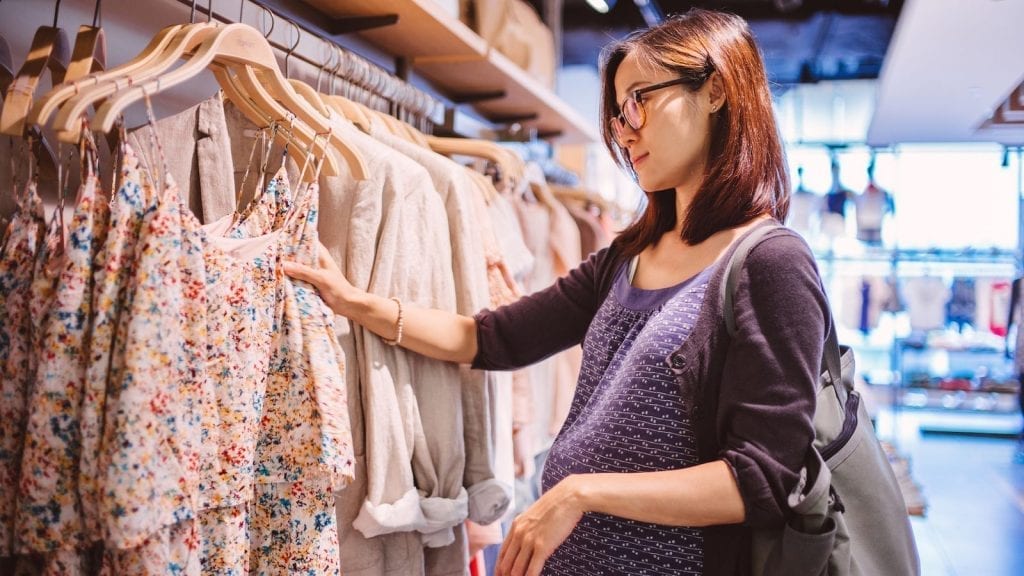
Genetic make-up and extended augmented reality are among the top 10 consumer trends for 2018, according to a new Euromonitor International report.
People’s growing curiosity about their genetic make-up and a rising interest in personalised health and beauty are fuelling a global market expected to soar by 2022, says the Top 10 Consumer Trends for 2018 report.
A new wave of companies aims to provide consumers with genetic findings related to their general health, fitness and nutrition, with the market growth being global and competition in the largely unregulated Chinese market particularly intense.
“Although the consumer market still faces hurdles, such as country-specific regulations, things are improving on the regulatory front, and with the market continuing to evolve, it is likely that further innovative start-ups will invest in new technologies,” says report author Alison Angus, Euromonitor International’s head of lifestyles.
With augmented reality (AR) having a wide range of applications in various industries, the potential in the mainstream consumer space is vast, bringing the benefits of in-store shopping into the home, says the report.
Convenient shopping
It forecasts that global internet retail sales will increase in value by a further 3 per cent this year.
“Online captures consumers’ interest with the convenience of the hassle-free, anytime, anywhere shopping they crave. The ability to see and touch products before buying is a bonus.
This is in part why the in-store shopping experience remains appealing, with 88 per cent of global sales in value terms still being made in-store last year,” says Angus.
“This year consumer expenditure is expected to grow at its strongest rate since 2011. Overall, we will see consumers continuing to question their values, priorities and purchasing decisions; deepening their engagement in the brands and issues that matter to them.”
The top 10 global consumer trends for this year are:
• Clean lifers: Consumers adopting clean-living, more minimalist lifestyles, where moderation and integrity are key. Clustering around educated 20 to 29-year-olds, a new generation of “straight edge” consumers has grown up knowing deep recession, terrorism and troubled politics, and has a wider worldview than previous generations.
• The borrowers: A new generation of community-minded sharers, renters and subscribers is reshaping the economy, making conspicuous consumption a thing of the past. Rejecting material goods in favour of experiences and a freer lifestyle, which has characterised the buying habits of millennials for the past few years, is a trend that continues to evolve and spread.
• Call-out culture: Whether it is airing a grievance on Twitter, sharing a viral message or signing an e-petition, consumers are having their say. “Hashtag activism”, while not new, is rapidly gaining momentum as internet use explodes and more people have access to social media.
• It’s in the DNA – I’m so special: People’s growing curiosity about their genetic make-up – what makes them so special – and a rising interest in personalised health and beauty are fuelling demand for home DNA kits. Target consumers range from the “worried well” and those curious about their origins to hardcore fitness and nutrition fanatics.
• Adaptive entrepreneurs are increasingly seeking flexibility in their lifestyles, and are prepared to take risks. Millennials especially have an entrepreneurial nature, shifting away from the “traditional” nine-to-five career toward one that affords more freedom.
• View in my roomers will be connecting perception and reality this year, merging digital images with physical space. Consumers will be able to visualise products before they try or buy, both in-store and online. The advent of even more sophisticated smartphones has given this demographic access to greater functionality, including AR technology.
• Sleuthy shoppers: With further political upheaval last year, the consumer trust crisis is deepening and leading to greater emotional involvement and action. Shoppers are still sceptical of mass-produced products and the motivations of the companies that create them, and are tired of hearing empty rhetoric and soothing words of assurance.
• Co-living: This trend has blossomed among millennials and the over-65s in the residential space. It is a form of housing where residents share living space and a set of interests and values. The trend stems from hyper-urban hubs that have embraced the sharing economy as a lifestyle choice.
• I-designers: The lingering impact of the global financial crisis has encouraged prime, working-age older millennials and gen X-ers to re-evaluate their spending habits.
Simultaneously, the rise of the sharing economy, with pioneers such as AirBNB and Uber, is eroding their desire to own goods (see The Borrowers trend).
• The survivors: Ten years on from the credit crunch that heralded the start of the Great Recession, the frugal mindset of consumers remains entrenched. Despite improving economies, rising incomes and falling unemployment, the gap between rich and poor is highly visible, and those caught between low pay/meagre state benefits and high living costs are still struggling to cope with austerity.

